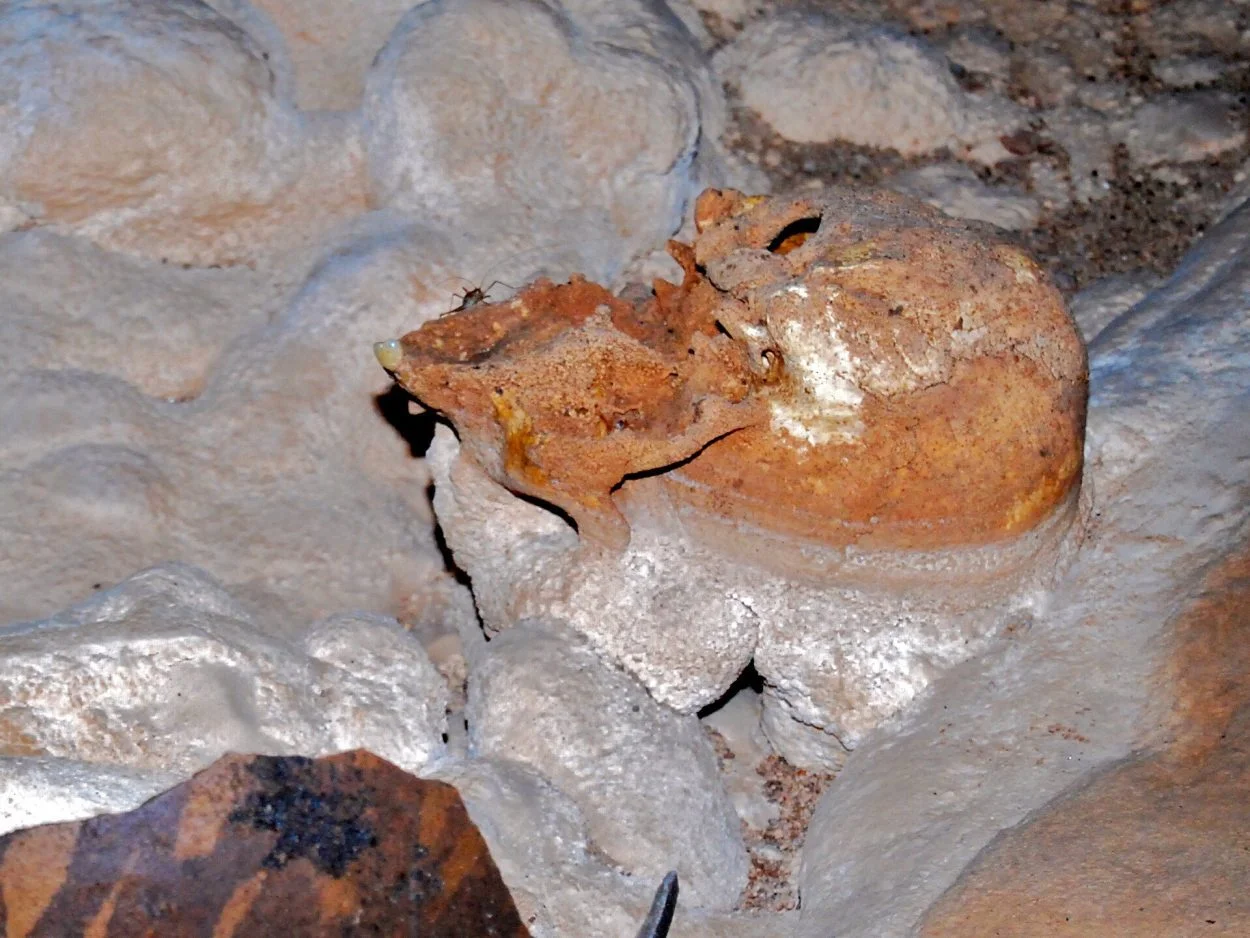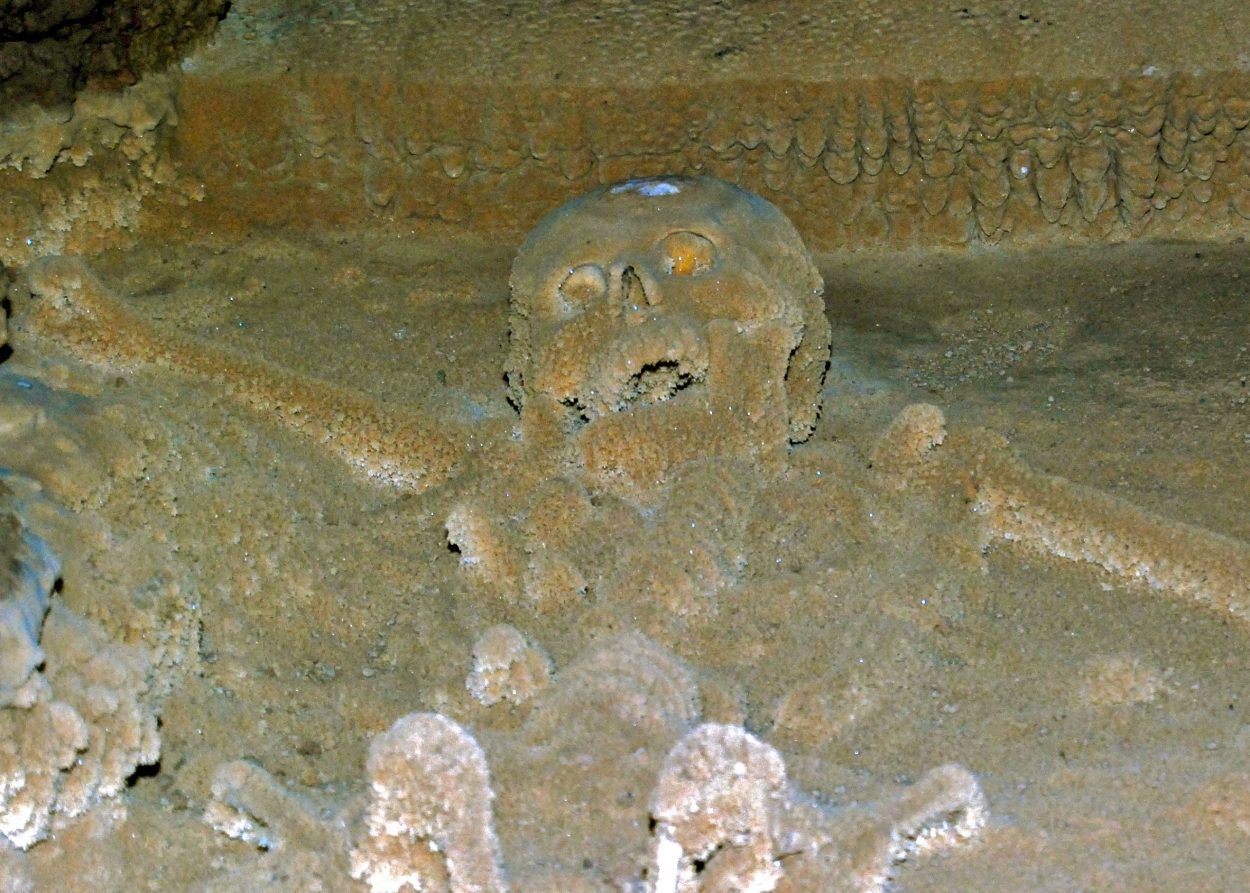Actun Tunichil Muknal, which translates as “Cave of the Crystal Sepulcher”, is a Maya ceremonial cave site located near San Ignacio in the Cayo District of Belize.
The Maya believed that the universe was divided into the sky, the earth, and the underworld, in which caves functioned as a portal or gateway to Xibalba, an underworld realm ruled by the Maya death gods and their helpers.
Actun Tunichil Muknal is one such venerated cave, in which the underground system stretches for around three miles in length, and contains large cave formations and chambers over 70 feet in height. A stream runs through the cave that the Maya deified as the birthplace of water and associated with Chaac, the Maya rain god.

Evidence of Maya activity in the cave dates from between AD 250 to 900, with the earliest artefacts (mainly agricultural offerings such as small cobs of maize) being deposited close to the cave entrance.
The nature of activity at Actun Tunichil Muknal changed over time after a massive regional drought, resulting in offerings deposited deep within the cave system that included human sacrifices.

Significant quantities of ceramics have been unearthed, many of which are marked with “kill holes” or other ritual damage, or functioned as containers for offerings. Minerals in the cave’s water has interacted with many of the offerings placed on the cave floor, causing calcium crystals to form on them.
Ritualistic activity is evident by modified cave formations, in some instances to create altars for their offerings, in others to create silhouettes of faces and animals, or to project a shadow image into the cave. Studies within the cave have also found slate stelae, where priests would sacrifice their own blood by cutting themselves with obsidian blades.

Fourteen assemblages of human remains have been identified, some of which indicate that they were bound and sacrificed. Sacrificing people, especially children, was a much more significant offering than food.
The transition from agricultural to human sacrifices in Maya society has been dated by archaeologists to the same time period when Maya cities began to be abandoned about 750-900 AD.

At the very end of the cave, a skeleton of a young adolescent was discovered who appears to have been clubbed to death and left as a sacrificial offering. Like many of the offerings on the cave floor, the skeleton has calcified, earning the nickname “Crystal Maiden”, for which the cave is partly named after.
Header Image Credit : Bernard DUPONT – CC BY-SA 2.0





